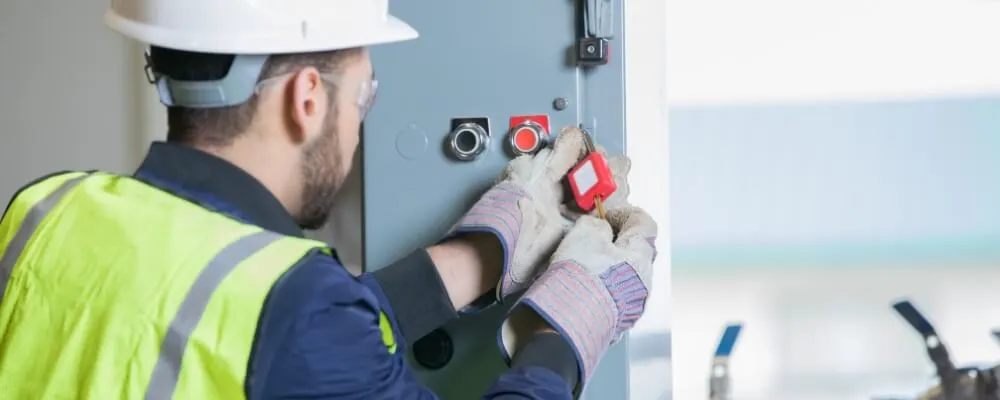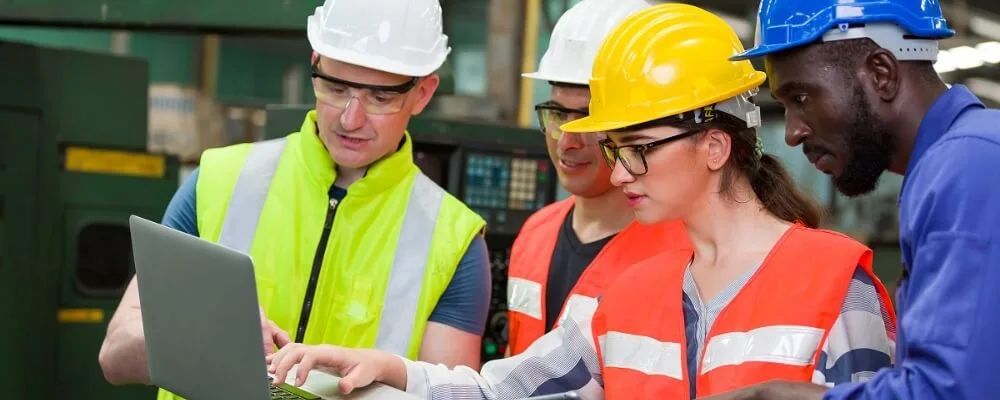In today’s fast-paced world, safety is our number one priority. That’s why implementing effective safety protocols is crucial for protecting our well-being and ensuring a secure environment. Whether you’re at work, school, or even in the comfort of your own home, having the right safety protocols in place can make all the difference.
From wearing protective gear to practicing proper emergency procedures, these protocols serve as a shield against potential risks and hazards. So, let’s dive into the world of safety protocols and discover how they can empower us to live with peace of mind and confidence.

What are Safety Protocols? Definition and Meanings
Safety protocols are a set of procedures designed to protect workers from potential hazards in their work environment. These written safety protocols are a crucial aspect of occupational safety and health. They include specific steps and measures to be taken to prevent accidents and injuries. For instance, a university lab might have safety protocols to handle chemicals, ensuring that students and staff are not exposed to hazardous substances.
Why is Writing Effective Safety Protocols Crucial for Workers?
Workers are at the frontline, exposed to various risks and hazards daily. Effective safety protocols ensure their health and safety, reducing the chance of accidents. A well-written safety protocol not only lists the potential hazards but also provides clear instructions on how to handle them safely. For example, a construction worker might need to know the proper technique to lift heavy objects without causing injury.
10 Best Practices to Write Safety Protocols
Writing effective safety protocols is crucial for ensuring the well-being of individuals in various environments. Here are ten best practices to consider when writing safety protocols:
1. Comprehensive Hazard Identification
The first step in crafting effective safety protocols is to understand the environment you’re dealing with thoroughly. This means conducting a meticulous examination of the workplace, the machinery in use, the chemicals present, and the tasks that workers perform daily. By identifying potential hazards at the outset, you can tailor your safety protocols to address specific risks, ensuring that no stone is left unturned.
2. Engage the Workforce
Workers are the backbone of any organization, and they interact directly with potential hazards. Their firsthand experience and insights are invaluable in the process of developing safety protocols. By involving them actively, you not only gain a deeper understanding of the risks but also foster a sense of ownership among the workforce. This collaborative approach ensures that the protocols are comprehensive and practical.
3. Dynamic Updates
The world of work is constantly evolving, with new machinery, chemicals, and processes being introduced. As such, safety protocols cannot remain static. It’s essential to revisit and revise them periodically, ensuring they remain relevant and effective. This proactive approach ensures that emerging risks are promptly addressed and workers are always protected.
4. Simplicity and Precision
While it’s essential to be thorough, it’s equally crucial that safety protocols are easily understandable. Avoiding technical jargon and drafting protocols in simple language ensures that every worker, regardless of their educational background, can comprehend and follow them. Precision in detailing steps and procedures ensures there’s no ambiguity, reducing the chances of errors.
5. In-depth Training Sessions
Once you’ve drafted your safety protocols, the next step is to ensure that every worker is familiar with them. Organizing comprehensive training sessions where protocols are explained, demonstrated, and practiced is vital. These sessions should be interactive, allowing workers to ask questions and clarify doubts, ensuring they are well-equipped to adhere to the protocols.
6. Feedback Mechanism
No system is perfect, and there’s always room for improvement. Establishing a feedback mechanism where workers can share their insights, experiences, and suggestions regarding the safety protocols is essential. This not only helps in refining the protocols but also fosters a sense of involvement and trust among the workforce.
7. Utilize Technology
In today’s digital age, leveraging technology can greatly enhance the effectiveness of safety protocols. Using software or apps can streamline the documentation process, making protocols easily accessible to all workers. Additionally, technology can be used to send reminders and updates and conduct virtual training sessions, ensuring that safety remains a top priority.
8. Regular Audits
Complacency can be a significant risk in safety management. To ensure that safety protocols are consistently followed and remain effective, it’s essential to conduct regular audits. These audits can identify areas of non-compliance, potential oversights in the protocols, or areas that need further attention, ensuring that the safety system remains robust.
9. Stay Informed
Safety standards and best practices are continually evolving, both at local and international levels. Staying updated with the latest safety standards, research findings, and best practices ensures that your safety protocols are always at the forefront of safety management. This proactive approach not only protects workers but also positions the organization as a leader in safety.
10. Promote a Safety-first Culture
Writing safety protocols is just one part of the equation. The real challenge lies in ensuring that safety becomes an integral part of the organization’s culture. This means promoting a mindset where safety is seen as a shared responsibility and is prioritized at all levels, from top management to the newest recruit. Regular safety drills, recognizing and rewarding safe behavior, and open communication channels are some ways to cultivate a safety-first culture.

What Harm Can Occur Without Proper Safety Protocols?
Safety protocols serve as the foundation for ensuring a safe and hazard-free work environment. Their absence or inadequacy can lead to a cascade of detrimental consequences, both immediate and long-term.
At the most basic level, the absence of safety protocols directly exposes workers to potential dangers. Without clear guidelines on how to operate machinery, handle chemicals, or perform specific tasks, workers are left to rely on guesswork or prior knowledge, which may not always be accurate or safe. This increases the likelihood of accidents. For example, a worker might unknowingly be exposed to a toxic chemical, leading to immediate health issues or long-term ailments.
Personal protective equipment (PPE) is a vital component of many safety protocols. PPE, such as gloves, safety goggles, helmets, and masks, acts as the first line of defense against many workplace hazards. Without the proper use of PPE, workers are directly exposed to risks. A simple task like welding without a protective mask can lead to severe eye damage. Similarly, handling chemicals without gloves can result in skin burns or absorption of harmful substances.
Beyond the immediate physical harm to workers, the lack of safety protocols can have broader implications for the company. Accidents and injuries can lead to significant downtime as machinery might need repairs or specific sections of the workplace might become temporarily unusable. This downtime can result in production losses and financial setbacks.
The Role of PPE in Safety Protocols
Personal Protective Equipment (PPE) stands as a vital barrier between workers and potential workplace hazards. Its integration into safety protocols ensures that workers remain shielded, especially in situations where hazards cannot be entirely eliminated.
Key Roles of PPE:
- Protection from Direct Hazards: Whether it’s a chemical spill in a lab or falling debris on a construction site, PPE, like chemical-resistant gloves or helmets, can prevent direct harm, such as burns or head injuries.
- Shielding Sensitive Areas: Certain parts of the body, like the eyes, are particularly vulnerable. Safety glasses, for instance, protect the eyes from dust, sparks, or other harmful particles.
- Maintaining Worker Health: In environments with airborne contaminants, masks, and respirators play a crucial role in preventing workers from inhaling harmful substances.
The Importance of Proper PPE Usage:
- Training is Crucial: Merely having access to PPE isn’t enough. Workers must be trained on its proper usage. For example, a safety mask’s effectiveness is compromised if it doesn’t fit snugly.
- Quality Matters: It’s essential to ensure that the PPE provided is of high quality, meeting industry and regulatory standards. Compromising on quality can lead to equipment failure and potential harm.
- Regular Maintenance: PPE needs regular checks and maintenance. Damaged or worn-out equipment can reduce its effectiveness in protecting the wearer.
PPE, when integrated effectively into safety protocols and used correctly, can significantly reduce the risk of workplace injuries. It acts as a critical shield, ensuring that workers remain safe even in high-risk environments.

Real-life Examples of Safety Protocol Failures
Safety protocols are designed to prevent accidents, protect human lives, and minimize environmental damage. However, history has shown that when these protocols are ignored, inadequately implemented, or simply absent, the consequences can be catastrophic. Let’s delve into some real-life examples to understand the gravity of such failures.
Oil Spills and Their Consequences
One of the most notorious examples of safety protocol failures is oil spills, which have both immediate and long-term repercussions.
- Deepwater Horizon (2010): Perhaps one of the most infamous oil spills in history, the Deepwater Horizon oil rig explosion resulted in the death of 11 workers and the release of approximately 4.9 million barrels of oil into the Gulf of Mexico. Investigations later revealed that the disaster was a result of multiple safety protocol breaches, including the failure of the blowout preventer, a last-resort piece of safety equipment. The spill had devastating effects on the marine and coastal ecosystems and severely impacted local fisheries and tourism.
- Exxon Valdez (1989): The Exxon Valdez oil spill in Alaska’s Prince William Sound is another example of safety protocol failure. The tanker struck a reef and spilled about 11 million gallons of crude oil. Human error was a significant factor, as the ship’s master was found to be under the influence of alcohol. The spill had long-lasting environmental impacts, with some species still showing signs of recovery decades later.
Mining Disasters
Mining is inherently risky, but with proper safety protocols, many accidents can be prevented.
- Soma Mine Disaster (2014): In Turkey, an explosion and fire at a coal mine in Soma resulted in the death of 301 miners. It was the country’s worst mining disaster. Investigations pointed to several safety violations, including inadequate ventilation systems and escape routes.
- Pike River Mine Explosion (2010): In New Zealand, a series of explosions at the Pike River Mine led to the death of 29 workers. Subsequent inquiries revealed that the mine lacked proper methane drainage and monitoring systems, leading to the buildup of explosive gases.
Chemical Plant Accidents
Chemical plants deal with volatile substances, making safety protocols paramount.
- Bhopal Gas Tragedy (1984): In one of the world’s worst industrial disasters, a leak at a pesticide plant in Bhopal, India, released toxic methyl isocyanate gas, killing thousands and causing severe health issues for countless others. The plant had multiple safety protocol failures, including malfunctioning safety systems and inadequate response measures.
These tragic events underscore the critical importance of robust safety protocols. They serve as sad reminders of the human, environmental, and economic costs that can arise from negligence, oversight, or inadequate safety measures. Properly implemented and regularly reviewed safety protocols can prevent such disasters and protect lives and the environment.
Risk Assessment: A Key Step in Safety Management
Risk assessment is the cornerstone of any comprehensive safety management system. It’s a systematic approach to understanding the potential dangers that might exist in a workplace and determining the likelihood of those hazards causing harm. The process begins with identifying potential hazards, which could range from machinery operations chemical handling, to ergonomic issues. Once identified, each hazard is then evaluated based on its potential severity and the likelihood of it occurring.
For instance, a chemical stored in a factory might be extremely hazardous, but if it’s stored securely with limited access, the risk of exposure might be low. Conversely, a less hazardous substance that is frequently used and accessed by many workers might pose a higher risk. After evaluating the risks, the next step is to develop measures to control or eliminate them. This could involve introducing new safety equipment, changing work processes, or providing additional training to workers.
Risk assessment isn’t a one-time activity. As work environments change, new equipment is introduced, or tasks evolve, risks need to be reassessed. Regulatory bodies like OSHA provide guidelines and tools that can assist organizations in conducting thorough and effective risk assessments.

The Importance of Training to Ensure Safety Compliance
Training plays a pivotal role in translating written safety protocols into practical, on-the-ground actions. It’s not enough for workers to be aware of safety protocols; they must fully understand them and know how to implement them in their daily tasks. Training sessions serve this purpose, providing workers with both theoretical knowledge and practical skills.
For instance, a worker might know that they should wear safety goggles, but training will teach them when and how to wear them, how to maintain them, and what to do if they become damaged. Practical demonstrations, where workers can see safety protocols in action and practice them in controlled environments, are invaluable. Such hands-on experiences reinforce learning and ensure that safety procedures are second nature to workers.
The Future of Safety Protocols: What’s Next?
The world of safety management is not static. As technology advances and we gain a deeper understanding of risks, the way we approach safety evolves. In the future, we can expect a more proactive approach to safety. Instead of just reacting to incidents, there will be a shift towards predicting and preventing them.
Data analytics, for instance, can analyze vast amounts of data from various sources to predict where potential hazards might arise. Wearable technology might monitor workers’ vitals and environmental conditions in real time, alerting them to potential dangers. Augmented reality could be used in training, providing workers with realistic simulations of potential hazards.
Furthermore, as workplaces become more interconnected, there will be a greater emphasis on holistic safety protocols that consider not just individual tasks but the entire system. This integrated approach will ensure that safety protocols are comprehensive, up-to-date, and effective in protecting workers in an ever-evolving work environment.

